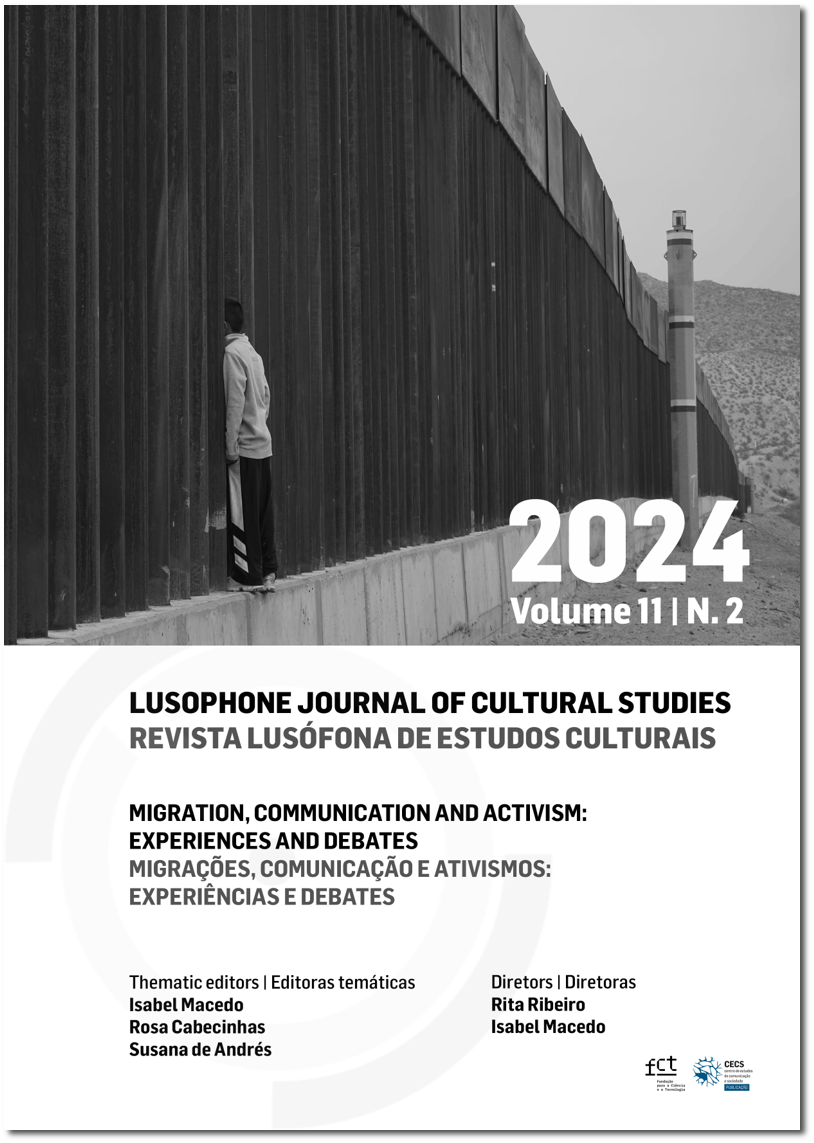Migration and Communication in Central America. Interview with Amparo Marroquín Parduci
DOI:
https://doi.org/10.21814/rlec.5835Abstract
Amparo Marroquín Parducci has served as a professor in the Department of Communication and Culture at the Universidad Centroamericana Simeón Cañas in El Salvador since 1997. Her research over the past two decades has focused on migratory processes and their influence on the construction of socio-cultural identities (Marroquín Parducci & Huezo-Mico, 2006). She has also addressed media narratives surrounding this issue (Marroquín Parducci & Carballo, 2021). Her most recent work investigates the establishment of the coyote (guide) profession as a pivotal mediator of the risks encountered by migrants during their journey to a new country. Marroquín Parducci has held visiting professorships in Argentina, Mexico, Colombia, Ecuador, Spain, and the USA. She is a specialist in the work of Jesús Martín Barbero and, since 2021, has served as Deanof the Faculty of Social Sciences and Humanities at the Universidad Centroamericana Simeón Cañas in San Salvador.
Downloads
References
Los Tigres del Norte. (1988). Tres veces mojado [Música]. Em Ídolos del Pueblo. Fonovisa.
Marroquín Parducci, A. (2005). Tres veces mojado. Migración internacional, cultura e identidad en El Salvador. ECA: Estudios Centroamericanos, 60(679–680), 465–474. https://doi.org/10.51378/eca.v60i679-680.5276
Marroquín Parducci, A. (2019). Comunicación y migración: pedagogías y resistencias de la narrativa sobre migración internacional. Chasqui: Revista Latinoamericana de Comunicación, (141), 161–176.
Marroquín Parducci, A., & Huezo-Mixco, M. (2006). Brújula rota. Cultura “nómada” de los trabajadores migratorios centroamericanos. Revista De Estudios Sociales, 1(24), 27–32. https://doi.org/10.7440/res24.2006.03
Marroquín Parducci, A. & Carballo, W. (2021). La nación audiovisual y sus fronteras. Papeles de trabajo: La Revista Electrónica del IDAES, 15(28), 12–25.
McAuliffe, M., & Triandafyllidou, A. (Eds.) (2021). Relatório mundial sobre as migrações 2022. Organização Internacional para as Migrações.
Lopes, C., & Moreira, D. (Eds.). (2005). Relatório de Desenvolvimento Humano 2005. PNUD.
Peralta, L. (2016). Los nuevos héroes del siglo XXI: Las migraciones subsaharianas vistas por el cine en España y África. UOC.
Retis, J. (2004). La imagen del otro: Inmigrantes latinoamericanos en la prensa nacional española. Sphera Pública. Revista de Ciencias Sociales y de la Comunicación, (4), 119–139.
Rocha, J. L. (2019). La exitosa desobediencia civil de migrantes indocumentados, informales y cuentapropistas. Envio, (447). https://www.revistaenvio.org/articulo/5641
Rocha, J. L. (2022). Explosion post-2022 de l’emigration nicaraguayenne. In B. Duterme (Eds.), Fuir l’Amérique Centrale. Points de vue du sud (pp. 113–124). Éditions Syllepse.
Rocha, J. L., Dennis, R., & Weegels, J. (2023). Debunking the myth of nicaraguan exceptionalism. Crime, drugs and the political economy of violence in a narco-state. Journal of Latin American Studies, 55(3), 1–25. https://doi.org/10.1017/S0022216X23000676
Ward, N., & Batalova, J. (2023, 2 de junho). Inmigrantes centroamericanos en los Estados Unidos. Migration Policy Institute. Acedido a 2 de maio de 2024, em https://www.migrationpolicy.org/article/inmigrantes-centroamericanos-en-los-estados-unidos-2021
Downloads
Published
How to Cite
Issue
Section
License
Copyright (c) 2024 Manuel Chaparro

This work is licensed under a Creative Commons Attribution 4.0 International License.
Authors own the copyright, providing the journal with the right of first publication. The work is licensed under a Creative Commons - Atribuição 4.0 Internacional License.












